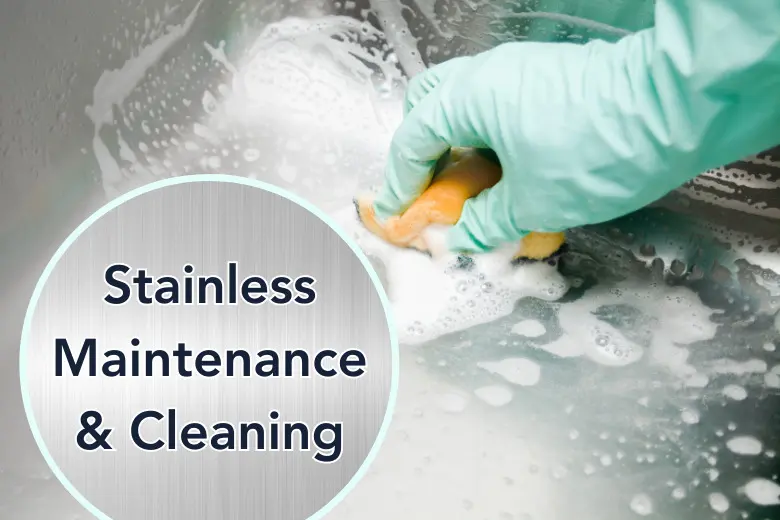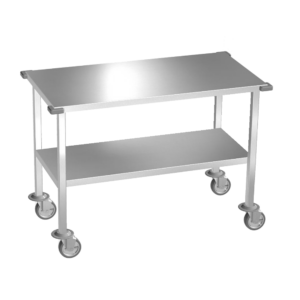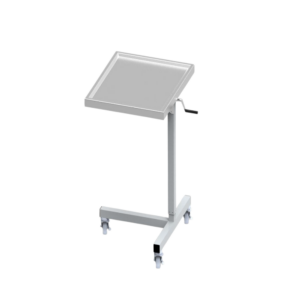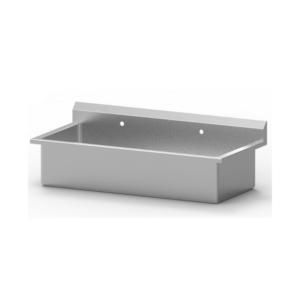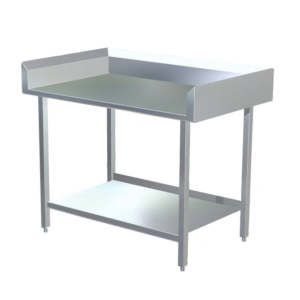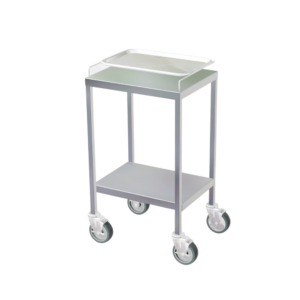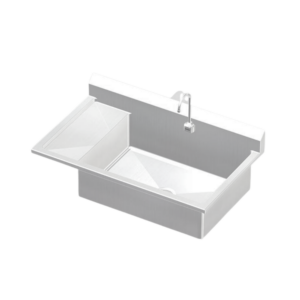Stainless steel products play a crucial role in medical facilities, providing durability, hygiene, and resistance to corrosion. From surgical instruments to furniture and equipment, stainless steel is widely used due to its unique properties. However, like any material, stainless steel requires proper care and maintenance to ensure its longevity and performance. In this article, we will explore the different types of stainless steel products found in medical facilities, identify common causes of wear and tear, discuss methods to avoid and reduce damage, and provide guidelines for the proper cleaning of medical stainless steel products, equipment, and furniture.
Types of Stainless Steel Products Found in Medical Facilities
Medical facilities encompass a wide range of stainless steel products, each serving a specific purpose. Here are some common examples:
Surgical Instruments: Stainless steel is widely used in surgical instruments due to its non-reactive nature, resistance to corrosion, and ease of sterilization.
Medical Equipment: Stainless steel is utilized in medical equipment such as examination tables, hospital beds, trolleys, and trays, providing durability and ease of cleaning.
Furniture: Stainless steel furniture, including chairs, cabinets, and shelving units, is prevalent in medical facilities due to its robustness, cleanliness, and modern aesthetic appeal.
Sinks and Basins: Stainless steel sinks and basins are crucial for maintaining cleanliness and hygiene in medical facilities, as they are resistant to stains, chemicals, and bacterial growth.
Types of Wear & Tear Associated with Medical Stainless Steel
Despite its durability, stainless steel products can still be susceptible to wear, tear, and damage due to various factors. Some common causes include:
Corrosion: Stainless steel is known for its corrosion resistance. However, certain chemicals can still cause damage if they come into prolonged contact with the surface. Strong acids, alkalis, or chlorides can break down the protective oxide layer on stainless steel, leading to corrosion and pitting. This can result in the degradation of the material’s surface and compromise its integrity.
Chemical Reactions: Some chemicals can react with the components of stainless steel, causing discoloration, stains, or etching. For example, bleach, ammonia, or certain acidic cleaners can react with the chromium in stainless steel, resulting in a yellowing or darkening of the surface.
Scratching and Abrasion: Abrasive materials, such as steel wool, scouring pads, or rough brushes, can scratch the surface of stainless steel. These scratches not only affect the appearance but can also create small grooves where dirt, bacteria, and other contaminants can accumulate. Over time, this can lead to corrosion and compromise the sanitary properties of the stainless steel.
Removal of Protective Layer: Stainless steel has a passive oxide layer that protects it from corrosion. Abrasive materials or harsh chemicals can strip away this protective layer, leaving the stainless steel vulnerable to further damage. Once the protective layer is compromised, the stainless steel becomes more susceptible to corrosion and staining.
Physical Damage: In addition to chemical damage, abrasive materials can cause physical damage to stainless steel. Scratches, dents, or deep abrasions can weaken the structure of the material and potentially compromise its functionality.
It is important to note that not all chemicals or abrasive materials will damage stainless steel. Many common cleaning agents, when used correctly and in the appropriate concentration, are safe for stainless steel surfaces. However, it is crucial to read and follow the manufacturer’s recommendations and guidelines to ensure the proper care and cleaning of stainless steel products. When in doubt, it is advisable to test any new cleaning agent or abrasive material on a small, inconspicuous area of the stainless steel surface before applying it extensively.
Avoiding and Reducing Stainless Wear and Tear
To prolong the life of stainless steel products in medical facilities and reduce wear and tear, the following measures should be implemented:
Proper Handling: Train staff members on appropriate handling techniques to prevent accidental drops, impacts, or contact with sharp objects.
Regular Maintenance: Establish a routine maintenance schedule to inspect, clean, and address any potential issues promptly.
Use Protective Measures: Employ protective coverings, such as silicone mats or pads, on stainless steel surfaces to minimize scratches and abrasions.
Proper Storage: When possible cover or store stainless steel products in designated areas, away from harsh chemicals, excessive moisture, and extreme temperatures.
Implement Usage Guidelines or Follow Designated Protocols: Develop and communicate guidelines for the appropriate use of stainless steel products, including weight limits and proper sterilization procedures. An example of a basic facility cleaning protocol is listed later in this article.
Stainless Steel in Commercial Verses Healthcare
There are several popular brands that offer commercial stainless steel cleaners specifically designed to clean and maintain stainless steel surfaces. Popular brands include Bar Keepers Friend, Weiman, Sheila Shine, 3M, and Simple Green. There are also many mild methods you will find effective in consumer environments including mild soap, white vinegar, isopropyl alcohol, baking soda, and mineral oil. It is worth noting however that most of these products are not designed for the special needs of healthcare facilities. In healthcare settings these seemly innocent methods can introduce significant issues and unnecessary liabilities. More suitable stainless steel cleaning products specifically designed for healthcare environments are discussed latter in this article.
Cleaning stainless steel in a healthcare setting differs from other common environments due to the need for maintaining strict cleanliness and sterility to ensure patient safety. In healthcare settings, stainless steel is often found in critical areas such as operating rooms, patient care areas, and medical equipment. Here are some key differences in cleaning stainless steel in a healthcare setting compared to other environments:
Importance of Sterility
In healthcare settings, maintaining sterility is paramount. Stainless steel surfaces, especially those in operating rooms or areas where invasive procedures are performed, must be cleaned using methods and agents that meet the required standards of disinfection and sterilization. Healthcare facilities typically follow specific protocols, guidelines, and use approved disinfectants to eliminate pathogens effectively.
Use of Disinfectants
Healthcare facilities employ disinfectants that are specifically formulated to kill a broad spectrum of pathogens, including bacteria, viruses, and fungi. These disinfectants are selected based on their efficacy against healthcare-associated pathogens while ensuring compatibility with stainless steel surfaces. They undergo rigorous testing to meet the standards set by regulatory agencies to ensure patient safety. Read more about the implications below.
Avoidance of Harsh Chemicals
While some commercial stainless steel cleaners may be effective in non-medical settings, healthcare facilities often avoid using harsh chemicals or abrasive materials that may leave behind residues or damage the stainless steel. The choice of cleaning agents prioritizes compatibility with sterilization processes and the minimization of any potential adverse effects on patients, practitioners, or the environment.
Frequency of Cleaning
In healthcare settings, stainless steel surfaces are subject to frequent and rigorous cleaning protocols. High-touch surfaces, such as medical equipment, bed rails, and handrails, may require more frequent cleaning to reduce the risk of cross-contamination. Regular cleaning schedules and comprehensive protocols are established to ensure consistent cleanliness.
Specialized Cleaning Techniques
Healthcare facilities may employ specialized cleaning techniques such as terminal cleaning, where thorough cleaning and disinfection processes are performed to eliminate any potential contaminants. These techniques may involve the use of vaporized hydrogen peroxide or other approved sterilization methods.
Adherence to Regulations and Guidelines
Healthcare facilities must adhere to strict regulations and guidelines set by regulatory bodies, such as the Centers for Disease Control and Prevention (CDC) or the National Institutes of Health (NIH). These guidelines provide specific recommendations for cleaning and disinfection practices, including the use of appropriate cleaning agents, disinfectants, and sterilization methods for stainless steel surfaces.
It is essential for healthcare facilities to have well-documented cleaning protocols, staff training programs, and quality assurance measures to ensure the highest standards of cleanliness and infection control. By following these specialized cleaning practices, healthcare settings can maintain a sterile environment and mitigate the risk of healthcare-associated infections, ultimately safeguarding patient well-being.
Disinfectants and the Potential Impact on Stainless Steel
Certain types of disinfectants used in healthcare settings can have a negative effect on stainless steel equipment and furniture if not used properly or if incompatible with the material. While stainless steel is generally resistant to many chemicals, some disinfectants may cause damage, wear, or discoloration under certain conditions. It is important to follow manufacturer recommendations and consider the specific type and grade of stainless steel when selecting and using disinfectants. Here are a few factors to consider:
Compatibility with Stainless Steel Grades: There are different grades of stainless steel, and their resistance to various chemicals may vary. Some disinfectants, particularly those with high concentrations of harsh chemicals or acids, may cause pitting or corrosion on certain grades of stainless steel. It is crucial to consult the manufacturer’s recommendations or seek guidance from the equipment supplier to ensure compatibility.
Concentration and Contact Time: Disinfectants often have specific instructions regarding the recommended concentration and contact time necessary to effectively kill pathogens. Using disinfectants at higher concentrations or for longer durations than recommended may increase the risk of damaging stainless steel surfaces. It is important to strictly adhere to the manufacturer’s instructions.
pH Levels: Some disinfectants may have extreme pH levels, such as highly acidic or alkaline solutions. Prolonged exposure to these extreme pH levels can cause discoloration, etching, or pitting on stainless steel surfaces. It is important to use disinfectants within the acceptable pH range for stainless steel.
Rinse and Dry Thoroughly: After using disinfectants on stainless steel surfaces, it is crucial to thoroughly rinse the surface with clean water to remove any residual disinfectant. Residual disinfectant left on the surface can lead to discoloration or corrosion over time. Additionally, ensuring proper drying after cleaning can help prevent water spots or mineral deposits.
Manufacturer Recommendations: Manufacturers of stainless steel equipment or furniture may provide specific guidelines for cleaning and disinfection. It is important to consult these guidelines to ensure the use of appropriate disinfectants and cleaning methods that are compatible with the specific product.
While there is evidence that some disinfectants can cause damage to stainless steel under certain circumstances, it is worth noting that proper usage and adherence to manufacturer guidelines can help minimize the risk. Healthcare facilities should conduct compatibility tests or consult with manufacturers when introducing new disinfectants or cleaning protocols to ensure the continued integrity and longevity of stainless steel equipment and furniture.
Healthcare Specific Stainless Steel Cleaning Brands
There are several brands that offer stainless steel cleaners formulated specifically for use in healthcare settings. These brands understand the unique requirements and regulations of healthcare facilities and develop products that meet the necessary standards for cleanliness and patient safety. Here are a few examples of brands that provide stainless steel cleaners suitable for healthcare settings:
Metrex: Metrex offers a range of healthcare-grade cleaning and disinfecting products, including stainless steel cleaners. Their products are formulated to meet the stringent requirements of healthcare facilities and comply with regulatory standards.
Ecolab: Ecolab is a well-known provider of cleaning and disinfection solutions for various industries, including healthcare. They offer stainless steel cleaners and polishes designed for use in healthcare settings, ensuring compatibility with sterilization processes and meeting the necessary standards of cleanliness.
PDI Healthcare: PDI Healthcare specializes in infection prevention solutions for healthcare facilities. They offer stainless steel cleaning products that are effective in removing dirt, grime, and fingerprints while meeting the specific needs of healthcare environments.
Steris: Steris is a global leader in infection prevention and sterilization solutions for healthcare facilities. They provide a range of cleaning products, including stainless steel cleaners, designed to meet the unique requirements of healthcare settings.
Certol: Certol offers a line of stainless steel cleaning and polishing products specifically formulated for use in healthcare facilities. Their products are designed to effectively clean stainless steel surfaces without damaging the material or compromising sterility.
It is important to note that availability may vary depending on your location and specific retailers. When selecting a stainless steel cleaner for healthcare settings, consider factors such as compatibility with sterilization processes, adherence to regulatory standards, and compatibility with the specific type of stainless steel used in the facility. Additionally, consulting with equipment manufacturers or seeking guidance from infection control professionals can provide valuable insights and recommendations for suitable stainless steel cleaning products.
Stainless Steel Equipment Cleaning Protocols in Healthcare
Healthcare facilities typically have protocols and guidelines for cleaning stainless steel equipment to ensure proper hygiene and infection control. These protocols outline specific procedures, cleaning agents, and frequency of cleaning to maintain a clean and safe environment. While the specific protocols may vary between healthcare facilities, here is an example of a general protocol for cleaning stainless steel equipment in a healthcare setting:
It’s important for healthcare facilities to develop and regularly review their cleaning protocols for stainless steel equipment to ensure compliance with industry standards and regulations. These protocols should be communicated to staff members through training programs and regularly updated as needed. This will help foster consistent care and proper maintenance of the products and their environment.
Below is an example of a general protocol that could be customized and supplemented with facility-specific guidelines, manufacturer recommendations, and regulatory requirements.
Example Cleaning Protocol
Materials Required:
- Approved stainless steel cleaner/disinfectant (compatible with stainless steel surfaces)
- Microfiber cloths or non-abrasive cleaning pads
- Personal protective equipment (e.g., gloves, aprons)
Procedures:
- Preparation:
- Ensure the availability of necessary cleaning materials and personal protective equipment.]
- Identify the specific stainless steel equipment to be cleaned.
- Perform hand hygiene and wear appropriate personal protective equipment.
- Inspection:
- Inspect the stainless steel equipment for visible dirt, stains, or debris.
- Note any damages or signs of wear that require attention.
- Cleaning Process:
- Dilute the approved stainless steel cleaner/disinfectant as per the manufacturer’s instructions.
- Apply the cleaning solution to a microfiber cloth or non-abrasive cleaning pad.
- Begin cleaning the stainless steel equipment, focusing on high-touch areas and surfaces that come into direct contact with patients or medical personnel.
- Wipe the surface gently, following the grain of the stainless steel, to remove dirt, fingerprints, and stains.
- Pay attention to crevices, corners, and joints, ensuring thorough cleaning.
- For stubborn stains, allow the cleaner/disinfectant to dwell for the recommended contact time, as specified by the manufacturer.
- Rinse the cloth or cleaning pad regularly to prevent cross-contamination.
- For larger equipment, use a suitable cleaning method such as spraying the cleaner directly on the surface and wiping it down.
- Avoid using abrasive materials or harsh chemicals that may damage the stainless steel.
- Rinse and Dry:
- Rinse the cleaned stainless steel surface with clean water to remove any residual cleaner/disinfectant.
- Ensure thorough rinsing to eliminate any chemical residues.
- Dry the stainless steel equipment using a clean, lint-free cloth to prevent water spots or mineral deposits.
- Inspection and Maintenance:
- After cleaning, inspect the stainless steel equipment for cleanliness and any residual stains.
- Address any damages, wear, or maintenance issues as per the facility’s maintenance protocols.
- Document any equipment-related concerns or repairs required.
- Disposal of Waste:
- Properly dispose of any used cleaning materials, following the facility’s waste management guidelines.
- Properly dispose of any used cleaning materials, following the facility’s waste management guidelines.
- Record-Keeping:
- Maintain documentation of the cleaning performed, including date, time, and personnel responsible.
Better Maintenance for Long-Term Success
High quality stainless steel is designed to last a lifetime, but caring for these products, equipment, and furnishings is essential to ensure their longevity, performance, and hygienic integrity. By understanding the types of stainless steel products found in medical facilities, identifying causes of wear and tear, implementing preventive measures, and following proper cleaning protocols, healthcare facilities can maintain the appearance, functionality, and safety of their stainless steel investments. By prioritizing maintenance and cleaning, medical professionals can contribute to the overall efficiency and cleanliness of their work environment, ultimately benefiting patient care and safety.

